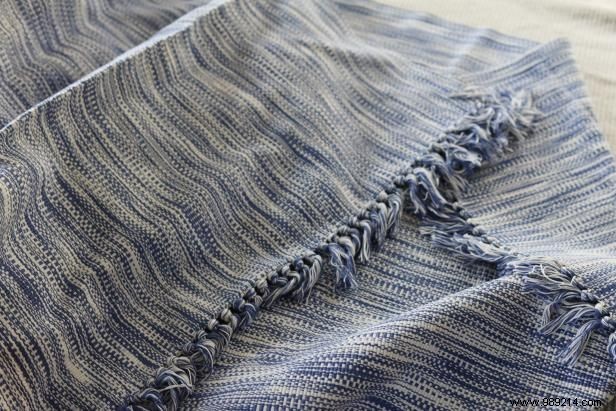
To help mask the remains of spills or other accidents, it's best to use flat-weave rugs with nubby textures and neutral colors. Choose a rug that is about four times as wide as your ottoman to account for proper waste.

Using a drill or screwdriver, remove the ottoman cushion from the wooden legs or frame. Next, use the dressmaker's scissors to remove the existing fabric from the cushion.

Use tape measure to determine the length, width and height of the ottoman cushion. Mark the rug with a marker or chalk and then cut it to size using dressmaker's scissors.
If you are covering a box cushion ottoman, you will also need to measure the height of the box cushions to cut out side panels.

To ensure the top of the ottoman is snug and smooth, add an extra layer or two of batting by measuring the batting, marking it, and then cutting it to size with dressmaker's scissors. The next step is to attach it to the back of the cushion support using a staple gun and staples.


With the help of a friend, stretch the rug over the batting and over the back of the cushion support. Once it's taut, secure the stretched rug in place with a staple gun and staples.
If you are going to cover a boxed cushion ottoman, you will also need to attach side panels to the top panel using a ballpoint tapestry needle and a 2-ounce skein of mercerized cotton in a matching color.
Using a screwdriver or drill, reattach the ottoman cushion to the frame or legs.
